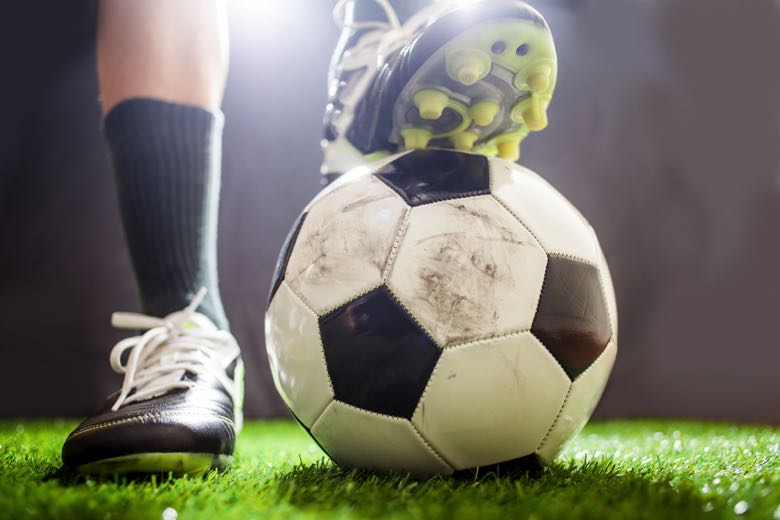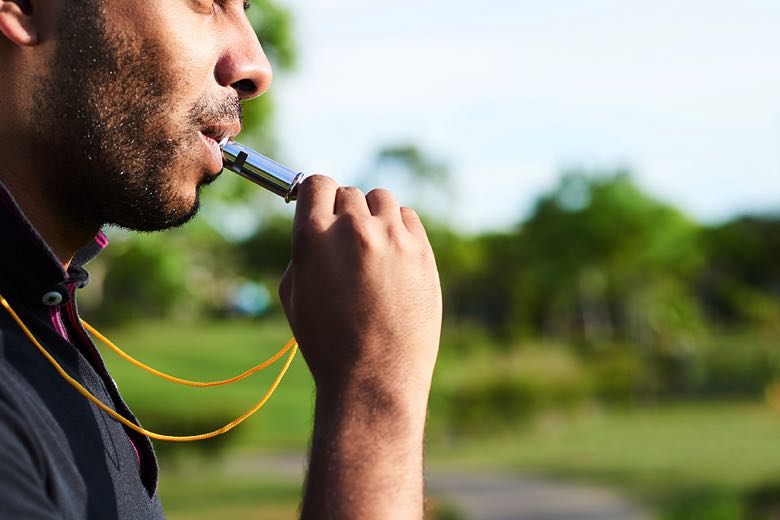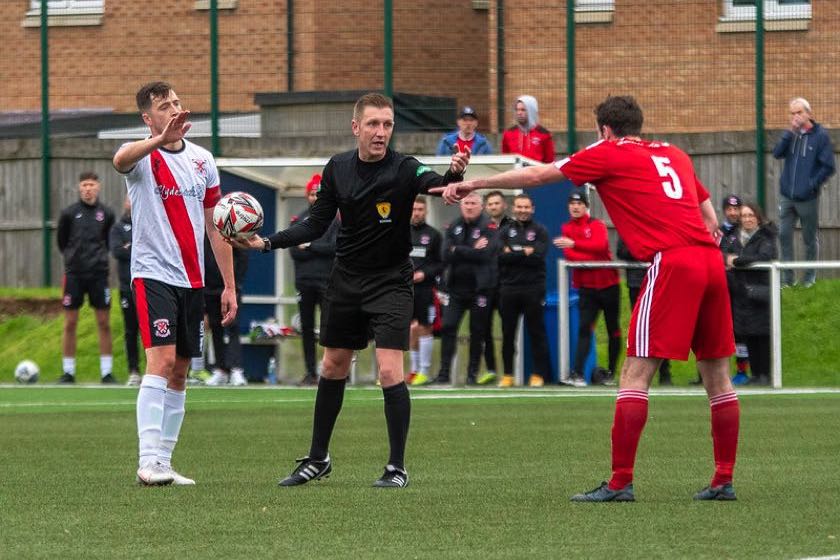Years ago in football, you’d occasionally get a scenario where there’d be a stoppage in play that would need to be subsequently restarted in a fair way. A referee would have the discretion to use a drop ball (or ‘dropped ball’ depending on the localised lingo), which would see them literally drop the ball to the fall between a player from each team, who would then kick anything that moved in a bid to win possession back for their team – or at least leave a mark on their opponent to remind them of the episode.
This was a contested drop ball, a frequent sight in football of yesteryear. However, you don’t see them as much anymore – which is good news for the players’ shins, if nothing else.
What Is a Dropped Ball?
As you know, football is a game with stoppages and restarts. Throw ins, free kicks, corners, goal kicks, kick-offs – these are just some of the ways that a referee will get the action back underway. But there are instances in which none of the above restarts are applicable – for example, when a player passes the ball, it strikes the referee and rebounds to a member of the opposing team. A free kick, of course, would not be appropriate here.
And so a match official, as outlined in Law 8 of IFAB’s football rulebook – ‘The Start and Restart of Play’ – will instead initiate a dropped ball instead.
What Is the Difference Between a Contested & Uncontested Drop Ball?

For more than 100 years, drop balls were contested, i.e. the ball was dropped between two players, who would then proceed to try and win the game – all while retaining the structural integrity of their own shins. But in 2019, contested drop balls were effectively removed from the beautiful game altogether. By this point, stoppages in play were usually instigated by one of the teams – for example, if an opposition player was injured, the team in possession would sportingly kick the ball out of play so that they could receive treatment.
The affected team would then restart the game with a throw-in, typically throwing the ball to an opposition player in an act of goodwill – unless your name is Nwankwo Kanu and you’re not familiar with the traditions of English football. In other situations, the referee would instigate a dropped ball but one of the teams would pass the ball to the other – another act of sportsmanship that essentially rendered the classic blood-and-thunder drop ball as redundant.
IFAB themselves played their part in eliminating contested drop balls in football, decrying the ‘manufactured’ nature of the restart which could, in their view, lead to one team securing an ‘unfair advantage’, or result in an ‘aggressive confrontation’.
DROP-BALL!
A belated farewell to the game within the beautiful game pic.twitter.com/65OrEzft76
— Bryan’s Gunn (@bryansgunn) June 15, 2022
So, in 2019, they rewrote football’s rule book to rid the game of contested drop balls – instead replacing them with an ‘uncontested’ version, in which the ball is dropped at the feet of a player from the team that was in possession prior to the stoppage.
When Is a Drop Ball Used in Football?
The most common example of a dropped ball being used in this contemporary era is when it strikes a match official. That being said, the referee is afforded the discretion to decide when play should be stopped for a drop ball and when it can be allowed to go on – for example, if the ball strikes them and rebounds in a completely different direction, a dropped ball may be called.
However, if the contact between the match official and the ball is minor and doesn’t affect the trajectory of the pass/shot, and where the same team remains in possession of the ball, they may just let play go on. There are other instances when a dropped ball may be used. One of those is when a player suffers a head injury – the referee has no choice but to stop play, regardless of where the ball is.
Once the injured party has been tended to, the referee will typically restart play with an uncontested dropped ball, with the recipient being the team in possession prior to the stoppage. A dropped ball will also be deployed when:
- The ball itself is popped, becomes flat or faulty
- An extra ball or foreign object enters the field of play
- An ‘outside agent’, such as a supporter or streaker, enters the field of play
- A spectator interferes with the game, i.e. by blowing a whistle or shining a laser pen
What Are the Rules on Dropped Balls in Football?

So, what are the exact rules on dropped balls in football? For any incidence outside of the penalty area, the ball is dropped at the feet of a player whose team was in possession prior to the stoppage that required the drop ball. This occurs at the point nearest to where the ball was when the game was stopped. All other players must stand at least four metres away from the droppage. As soon as the receiving player touches the ball, the game is ‘live’ and play resumes as normal.
When the stoppage occurs due to an incident inside one of the penalty areas, the drop ball rules are slightly different. Here, the defending team’s goalkeeper will be the recipient of the dropped ball – regardless of how the play was unfolding prior to the stoppage. They are allowed to pick the ball up or play on with their feet.
There can be instances where a dropped ball is messed up by the receiving player, and therefore the ball has to be dropped again. They’re not allowed to touch it before it bounces, for example, and they aren’t allowed to shoot directly at goal and score; a dropped ball must make contact with at least two players before a goal can be scored. If a player scores directly from a dropped ball, play is restarted with a goal kick to the defending team.

